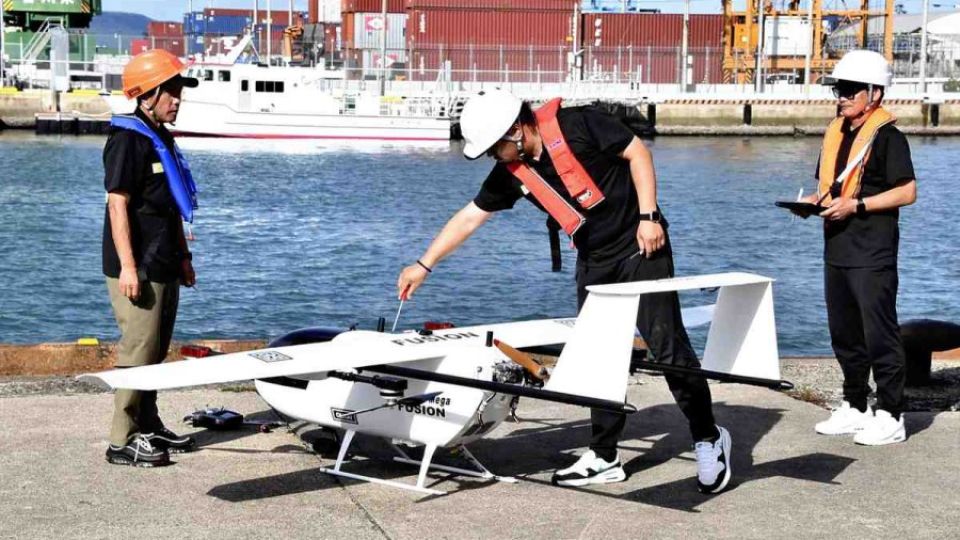November 18, 2024
TOKYO – The Japan Coast Guard has started test flights of domestically-produced large drones in order to use them for sea rescue operations and to manage lighthouses. Last month, the drones were flown for the first time over Sagami Bay in Kanagawa Prefecture and the Seto Inland Sea in Kagawa Prefecture. JCG officials will consider the equipment and deployment sites in order to start implementing them as soon as possible.
The type of aircraft the JCG plans to introduce is called a vertical takeoff and landing or VTOL. They can fly faster and are sturdier than smaller drones, and able to fly for longer periods of time. They also have other advantages compared with manned aircraft such as not requiring runways, being capable of taking high-resolution photographs from low altitudes and are easier to transport over land.
On Oct. 30, the JCG conducted test flight of a VTOL developed by Qu-Kai Inc., a Tokyo-based firm. The drone, which has a 3.5-meter wingspan, departed a port near the Takamatsu Coast Guard Office and was flown over the Seto Inland Sea coastline several times.
During the drone’s 20-kilometer round trip, including over the sea along the coastline of Inagi Island in Takamatsu City for 25 minutes, clear images of a lighthouse and vessels were instantly delivered to the coast guard office. Officials are now verifying the survey’s effectiveness by comparing the values of the speed and direction estimated from images of the sea surface with actual values measured with buoys in the sea.
JCG officials believe that it would also become possible to quickly send large drones to the sites of maritime accidents, before the arrival of patrol boats and manned drones and they are expected to play a highly useful role in search and rescue operations. In addition, it is also expected to become possible to efficiently inspect lighthouses located on cliffs, which are difficult to approach.
However, when JCG officials tested the drone’s takeoff and landing on a patrol boat in Sagami Bay for the first time on Oct. 1, they observed the drone being affected by the rocking of the boat caused by the waves, sea breeze and strong radio waves, which is particular to patrol boats. From Nov. 12, officials began more test flights of the drone in Sagami Bay.
“We will continue conducting test flights and inspecting the equipment,” said Teruhiro Suzuki, a JCG official in charge of promoting new technology. “We hope to introduce large drones to a variety of future JCG operations in order to make use of them for ensuring the safety and security of the public.”

